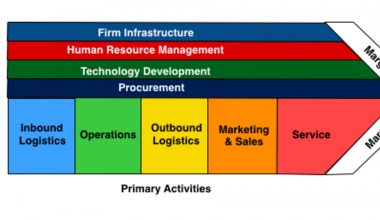Consumer markets play an important role in the economy by assisting manufacturers in getting their goods and services to the end customer. There are various types of consumer marketplaces, each with its own set of characteristics and customer base. Knowing your consumer market and how to target buyers can help your company meet buyers’ needs and generate more income. Here’s all you need to know about the consumer market.
What is the Consumer Market?
The term consumer market refers to the market in which consumers buy goods and services for personal consumption rather than resale. Products that customers use on a daily basis dominate this industry. When a consumer buys a product for his or her own use, he or she is engaging in a consumer market. The term “consumer market” refers to both products and services. Because the goods or services being purchased are for personal use, the consumer has considerable decision-making power. Consumer markets have generally been thought to be offline. However, with the development of eCommerce, consumer markets can now be online as well.
Types Of Consumer Market
There are four major categories of consumer marketplaces, which are as follows:
#1. Food and beverages
The consumer market for food and beverages is vast and encompasses every vendor who sells food and beverages directly to consumers. These are some examples:
- Grocery stores
- Delis
- Restaurants
- Cafes
- Fast-food restaurants
- Cafeterias
- Pubs
- Catering
- Liquor stores
Processing, packing, distributing, and servicing are all part of the food and beverage sector. The consumer market, however, includes only those elements of the industry that sell directly to individuals.
#2. Retail
Because it connects manufacturers, producers of goods, and distributors with consumers, the retail industry is an important factor in the consumer market. Retail includes everything you can buy in small quantities for personal use, such as:
- Hard or durable goods such as appliances, fishing equipment, gardening tools and equipment and electronics
- Soft goods such as household items, paper products and cosmetics
Examples of retailers are:
- Supermarkets
- Large national stores
- Corner shops
- Thrift shops
- Clothing stores
- Roadside stalls
Because the internet has enabled many retail platforms to go online, millions of sellers can now sell straight to consumers through major online marketplaces or their own virtual stores.
#3. Consumer products
The consumer goods market consists of:
- Convenience items
- Unwanted items
- Specialty items
- Goods for purchase
Milk, sugar, flour, and other basics are examples of convenience commodities. Shopping for goods necessitates greater thought before making a purchase decision because they are more expensive and have a longer lifespan. Furniture and refrigerators are two examples. Specialty goods include products such as jewelry, but unsought goods include items such as life insurance, which are not widely or frequently purchased.
#4. Transportation
The consumer market’s transportation segment includes all modes of transportation that transfer passengers from one location to another. It comprises normal city taxis, public buses, commuter trains, ferries, and domestic and international airplanes. In contrast to freight or cargo shipping, the consumer transport sector delivers services directly to travelers and commuters.
What Are the Factors Affecting the Consumer Market?
Consumers have several options due to the large range of products and services offered on the market. There are numerous elements that influence how and why consumers make purchases. When developing marketing and branding strategies, marketing firms and departments typically take into account a number of distinct aspects.
Cultural Factors
Cultural factors often have the greatest impact on consumer purchasing behaviour. Culture can be defined as how society influences a person’s fundamental values, ideals, actions, and attitudes. There are subcultures and social classes inside a larger culture. Culture is frequently defined by where and when a person is born, and these perceptions are passed down through generations. Fast food and restaurant marketing in the United States is an example of how cultural elements influence the consumer market. American culture emphasizes time scarcity, which influences how food and restaurants advertise and market their products and services.
Societal Factors
Family, social roles, social groupings, and social status all have an impact on consumer purchasing behavior and the market. These elements include families, workplaces, religions, and schools. These types of groups frequently affect a person’s behavior and attitude toward a wide range of consumer things, including apparel, automobiles, and homes. A married pair making joint purchases is an example of this form of influence. Another case in point is when a person determines he needs a specific brand of automobile in order to blend in with his coworkers or peers.
Personal Factors
The age, occupation, lifestyle, and stage of life of a consumer influence his purchasing behavior as well as the market. Throughout their lives, most people’s purchasing habits and tastes change. Certain products are essential to one demography but not to another. Clothing and music industries, for example, conduct strong marketing campaigns aimed at teenagers and young people, who frequently have a lot of discretionary means. Home purchases are another illustration of how personal characteristics influence the consumer market. Advertisers usually target newlyweds who are starting families.
Psychological Factors
Psychological elements have a large impact on the consumer market since a person’s motivations, beliefs, attitudes, and perceptions drive his purchasing behavior. For example, if a youngster is reared in middle-class America and his parents communicate their love through presents and money, he is more likely to make purchases based on subconscious sentiments of self-worth connected with material possessions.
How To Target Buyers In a Consumer Market
Here are a few pointers to help you define and better target your consumer market audience for higher sales and revenue generation:
#1. Determine your present consumer base.
Knowing your present buyers is the first and most critical stage in targeting buyers in a consumer market. Examine your present consumer base for shared interests and qualities. Examine the demographics and characteristics of the purchasers in your customer base who have the most purchasing power. Customer surveys and market research can help you in determining your clients’ wants and how you can better fulfill them.
#2. Target specific populations
Another strategy to improve consumer market targeting is to streamline your marketing and offerings to a specific demographic. You may target buyers using the following:
- Age and Location
- Education
- Earnings
- Occupation
- Relationship status
- Ethnic origins
People between the ages of 18 and 24, for example, prefer to eat snacks because they are more convenient and flexible than complete meals. People in rural communities with rail access, on the other hand, are more likely to travel vast distances by train. Low-income families with children may frequent retail outlets to buy in bulk and take advantage of discounts, whereas single consumers with middle-class incomes may opt to purchase more expensive brands at posh stores.
#3. Examine the competition
You can assess your competitors’ offers, the unique selling characteristics of their products or services, their advertising campaigns, their marketing techniques, and other factors that give them a clear advantage over your products. This exercise’s data can help you better target your market. Determine what your customers like about your competition and consider how you might outperform them by improving the features and benefits of your own offerings or modifying the cost of your own.
For example, if you work in transportation, you may be interested in learning about the methods your competitors employ to persuade travelers to utilize their service. It could be low fares, a customized in-flight meal, or even the flight attendants’ personal preferences. Some retailers may increase customer loyalty by providing redeemable points when customers shop.
#4. Examine your distinct value proposition.
Analyze the features, benefits, and value your product or service offers the user to see whether it genuinely answers the buyer’s problems as stated. This can assist you in identifying consumers who will benefit from the attributes of your products or services. At the conclusion of your evaluation, make a decision on techniques that will allow your product or service to provide a more gratifying consumer experience at a competitive pricing point.
For example, some low-cost airlines’ distinctive value proposition is low-cost tickets regardless of travel season. Many of these airlines make a profit by charging a greater price for in-flight meals and other products than non-budget airlines. If you own a long-distance bus company, you may provide free Wi-Fi on the coach, frequent stops, and easy access to passengers with disabilities and those traveling with pets.
#5. Psychographic targeting
Psychographics are a person’s personal characteristics, and you can examine your product or service to see how they fit into the personality and lifestyle of your target market. Young individuals who spend a lot of time on the internet, for example, are virtually always more engaged on social media platforms. Traditional media sources may be more accessible to older, wealthier, retired persons who read newspapers. These data points can assist you in developing an engaging message that will resonate with your target market, enhance conversion, and increase revenue.
Personal characteristics of persons that you can evaluate and utilize to target clients include:
- Personality
- Lifestyle
- Interests and hobbies
- Attitudes
By defining each market segment’s personality and behaviors, you may better serve them with products or services that match their demands. People who are diabetic or watch their sugar intake, for example, may avoid sugary snacks, whereas athletes may favor high-carb, protein-rich choices.
#6. Qualify the market
Once you understand your market’s demands and how to address them, you can qualify them using criteria such as:
- Is the market large enough for you to profit?
- What is the market’s purchasing power and how accessible are your products?
- How will you compete with products and services that offer comparable or superior features and pricing?
For example, if you intend to open a new store, you need be aware of the percentage of residents in the neighborhood whose demographics fit your target market. The data can assist you in determining the size of the store and the sort of items to stock in the new location.
This method can also be used to develop your pricing plan when launching a new air transport route. In contrast to an area with a majority of low-income earners, business class and more expensive in-flight services may be a viable pricing strategy if there are many affluent residents.
Difference Between Consumer and Organizational Markets
Individuals and organizations both require purchases in order to carry out their daily tasks. There is a considerable contrast, however, between how and why an organization obtains items and services and how an individual shops. Understanding these divisions is crucial if a person wishes to become a business owner in both the organizational and consumer sectors.
Definitions
A consumer market is one in which customers buy goods or services for their own use rather than to resell. Consumer markets are often made up of items that people use on a regular basis.
Organizational markets are ones in which companies and individuals purchase commodities for purposes other than personal consumption.
Organizational Market vs. Consumer Market
The consumer market is made up of billions of people who are at the tail end of a company or service chain. These folks vary in age, socioeconomic status, education, and personal preferences. Consumers purchase a variety of goods and services, and their capacity to select which commodities and services to purchase drives the entire economy. Multiple factors influence these judgments, including cultural, societal, personal, and psychological factors.
While each client is unique and autonomous, organizational markets are large groups of people or businesses working together to achieve a similar goal. Organizational buyers are further classified into four types: resellers, manufacturers, governments, and institutions.
Furthermore, organizational markets tend to aggregate regionally, whereas consumer markets are more widely distributed. Film industries connected with locations such as Hollywood, California, and Mumbai, India, as well as petrochemical firms in Russia and Saudi Arabia, are examples.
Additionally, organizational markets like to invest for the long term. They may work with a supplier at any point during the purchasing process. Buyers in the consumer sector, on the other hand, have little to no contact with the manufacturers of the things they use.
What is an Example Of A Consumer Market?
Food, drinks, beverages, legal, health, and financial services, clothing, electronics, and accessories, and many other items are examples of consumer markets in which purchasers buy products or services for the purpose of the consumer rather than to resale.
In Conclusion,
Consumer markets are critical in the marketing ecosystem since they are where the majority of customer purchases are made. Marketing in consumer markets is heavily influenced by the sort of consumers. Consumers are classified based on their traits, which might be demographic, psychographic, behavioral, or geographic in nature. Demographic characteristics consider age, gender, occupation, income, and education variances and similarities. Market surveys are used by businesses to determine these features. Psychographic qualities take into account values, beliefs, interests, and attitudes.
- PERSONAL SELLING: Definition, Features & Strategy
- TRADITIONAL BANKS: Definition, Differences Between Online & Traditional Banking
- PRODUCT LABELING: What Is It & Why Is It Important?
- How Important Is It to Verify the Identity of Your Customers?






